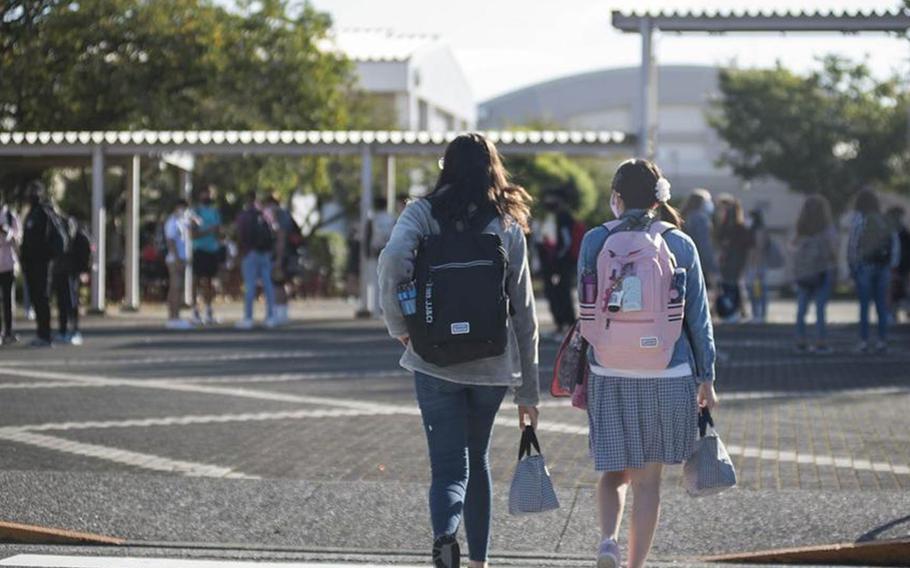
Defense Department schools are set to enforce a new dress code that will apply worldwide beginning July 1. (Akifumi Ishikawa/Stars and Stripes)
Students at Defense Department schools will no longer have to measure the lengths of their skirts and shorts, or leave their ball caps at home on bad hair days.
The Department of Defense Education Activity has approved a new gender-neutral student dress code that goes into effect July 1 at all 160 DODEA schools in the Pacific, Europe and Americas regions, including Puerto Rico and Cuba.
The policy doesn’t include language that focuses on one gender exclusively or single out styles of dress specific to a race or religion, said Joy Medley, a DODEA education specialist.
How much skin students may show above the knees will no longer be measured by inch counts or “the fingertip rule,” which required a hemline to extend below the fingertips with arms hanging to the sides.
The updated guidelines posted on DODEA’s website simply call for “tops with sleeves” and “solid clothing (not transparent or translucent) that fully covers the top and bottom, from armpit to mid-thigh.”
The rules do away with myriad standards that sometimes differed between schools on the same base. Some barred spaghetti straps, halter tops, baggy pants, “excessively tight” Spandex and headbands, among other things.
The new dress code is easier for families to follow and simpler for principals to enforce, Medley said.
Ripped jeans will be allowed, which is something Medley said students asked to have approved. So will hats, which girls particularly wanted for “bad hair days,” she said.
However, the focus on gender neutrality means that the new permissiveness will apply to all.
“We couldn’t say girls can wear hats, but boys couldn’t,” Medley added.
Most schools didn’t allow students to wear baseball caps inside buildings, she said, a rule that reflects the military etiquette of removing hats indoors. They will be allowed as long as the brim doesn’t obscure the face.
Shoes must be safe for school, with slippers banned unless approved by the principal. Open toe shoes with a strap across the heel are allowed.
“The goal, from the outset, was to create a dress code that is equitable, nonbiased and supports the learning environment while allowing individual expression,” said Will Griffin, a DODEA spokesman.
Much of what students aren’t allowed to wear hasn’t changed, Griffin said. That includes anything that promotes violence, contains curse words, or depicts drugs, alcohol or tobacco products.
“If a student couldn’t wear a T-shirt with a big marijuana leaf last year, that is still true,” Griffin said.
Clothing deemed discriminatory, pornographic, obscene or promoting something illegal still isn’t allowed.
When the new rules go into effect, minor violations such as wearing something off the shoulder won’t get a student suspended or sent to the nurse’s office until a parent can bring a change of clothes.
Across the United States, stories of dress code issues have drawn national attention, as schools battle with parents, students and civil rights advocates on the fairness of the standards and the disciplinary measures enforcing them.
DODEA is focusing on “teachable moments,” where a teacher and student discuss what’s permissible, Medley said.
“Our goal is for our students not to lose any instructional time” because of what they’re wearing, she said.
Discipline might be appropriate for “a repeated thing or attitude of the student,” Medley said.
DODEA’s education policy division, along with a civil rights steering committee and diversity, equity and inclusion specialists began revising the dress code in fall 2021. They reviewed U.S. trends and took input from school and community members.
Some 460 responses were received from students, parents, school personnel and administrators during a public comment period, with students providing the most feedback, Medley said.
“They wanted to be able to express themselves, to have their own individuality and to feel like they were part of the decision of what they could wear to school,” she said.